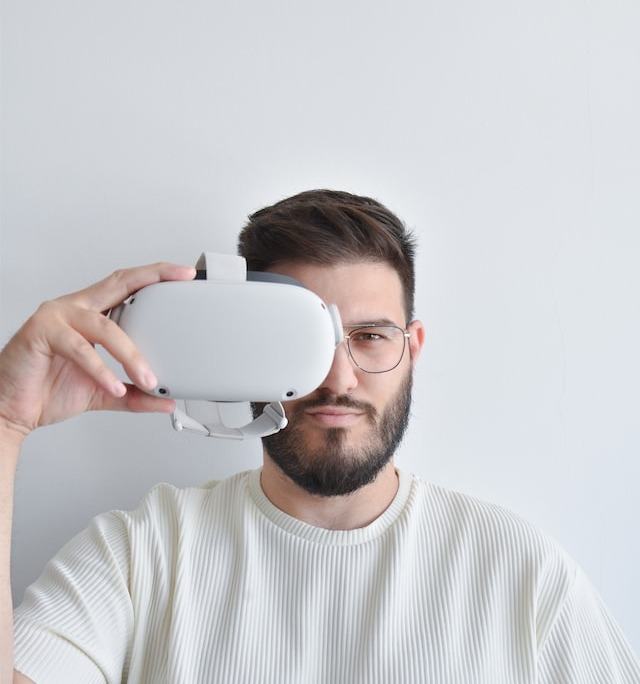The Metaverse Explained
The term “metaverse” has been buzzing in tech circles and mainstream media for years now, but what does it actually mean? Essentially, the metaverse is a collective virtual environment that dissolves the differences between the digital and physical worlds. Think of it as a 3D virtual network of environments in which people can live, play, socialize, and create by using digital avatars.
While traditional websites or programs that you access on a screen, the metaverse is crafted to introduce immersive experience that more closely resembles entering a different world. These virtual worlds range from fantasy worlds that went beyond physics to virtual replicas of real places.
The Technology Behind Virtual Worlds
A number of enabling technologies are combined to enable metaverse experiences. Virtual reality headsets create fully immersive visual and auditory experiences, and augmented reality places digital elements in the real world by using a smartphone or dedicated glasses. High-speed internet links permit real-time interaction between users all over the world.
3D graphics engines create rich virtual worlds, and cloud computing provides the massive processing power to handle thousands of concurrent users. Blockchain is being explored for digital ownership and virtual economies, too, although its role is still evolving.
Magic happens when all these technologies are combined to create frictionless experiences where users can interact with both the world and each other in natural and engaging ways.
Applications in the Real World Shaping Up
The metaverse isn’t all about gaming, though that’s certainly a big part of it. Virtual shopping enables people to browse virtual malls, virtually try on clothing and other fashion items through their avatar characters, and purchase items to be shipped to their physical addresses.
Schools are piloting virtual classrooms where kids from all over the world can attend classes, participate in simulations, and work on projects in ways that ordinary video calls just can’t match.
Remote work is another possible goldmine. Instead of gazing at small video windows during a meeting, colleagues can gather in virtual conference rooms, brainstorm on digital whiteboards that are shared, and even walk informally through virtual spaces side by side.
Entertainment venues are creating virtual concerts and events where thousands can attend without limits on room capacity. Designers and artists are creating entire worlds for others to explore, taking imagination from the individual to group experiences.
The Benefits of Connected Virtual Spaces
One of the most powerful aspects of metaverse technology is the way it can bypass geography. A person in Tokyo can collaborate with a person in São Paulo as if they were sitting in the same room. That level of connectivity provides new opportunities for international collaboration, cross-cultural exchange, and relationship building.
The potential for creativity is enormous. As opposed to the real world, where there is limitation in physics and material, virtual worlds can be anything imagination chooses. This gives rise to the possibility of innovative problem-solving, art, and social interaction.
For those with mobility issues or in remote locations, metaverse platforms will provide access to experiences and communities that would otherwise be inaccessible. Virtual journeys could deliver rich cultural experiences without the cost and hassle of real travel.

Navigating the Challenges
But the metaverse environment is not without troubles. Data security and privacy are major issues since these sites amass huge amounts of data on user behavior, preferences, and patterns of interaction. Strong security practices and clear policies must be enforced in order to safeguard users.
Addiction to the digital and loss of reality are actual concerns. Increased time spent in virtual worlds could impact actual lives and responsibilities. Finding healthy balance will be critical as these technologies become more prevalent.
There are also technical challenges. High-quality metaverse experiences often require expensive hardware and fast internet connectivity, which could result in digital divides between people who enjoy access to advanced capabilities and those who do not.
Identity verification and protection from ill intent in virtual realms remains challenges. While the internet grapples with fraud and harassment, virtual worlds too have facing similar issues that need well-thought-out solutions.
Looking Toward the Future
The metaverse is in its early stages, like the internet of the 1990s. Current platforms show us what can be done but technology is still moving extremely quickly. Improvements in graphics quality, decreasing hardware costs, and better user interfaces are making these experiences nearer and more inviting.
Interoperability between different virtual worlds remains an aspiration and not yet an actuality. The vision of easily transferring between different metaverse platforms with the same avatar and virtual assets remains theoretical, but the industry is working toward that seamless future.
As the technology matures, more specialized applications can be expected to follow. Virtual therapy sessions, virtual museums, remote consultations with doctors, and collaborative design workshops are some that are just waiting in the wings.
The metaverse is a foundational shift in how we might experience digital content and engage with each other online. Despite ongoing issues, the promise of creating more immersive, collaborative, and creative digital experiences has kept innovation in this space advancing. Whether or not the metaverse turns out to be as revolutionary as its fans vow is yet to be seen, but it’s certainly worth watching as the technology develops.

